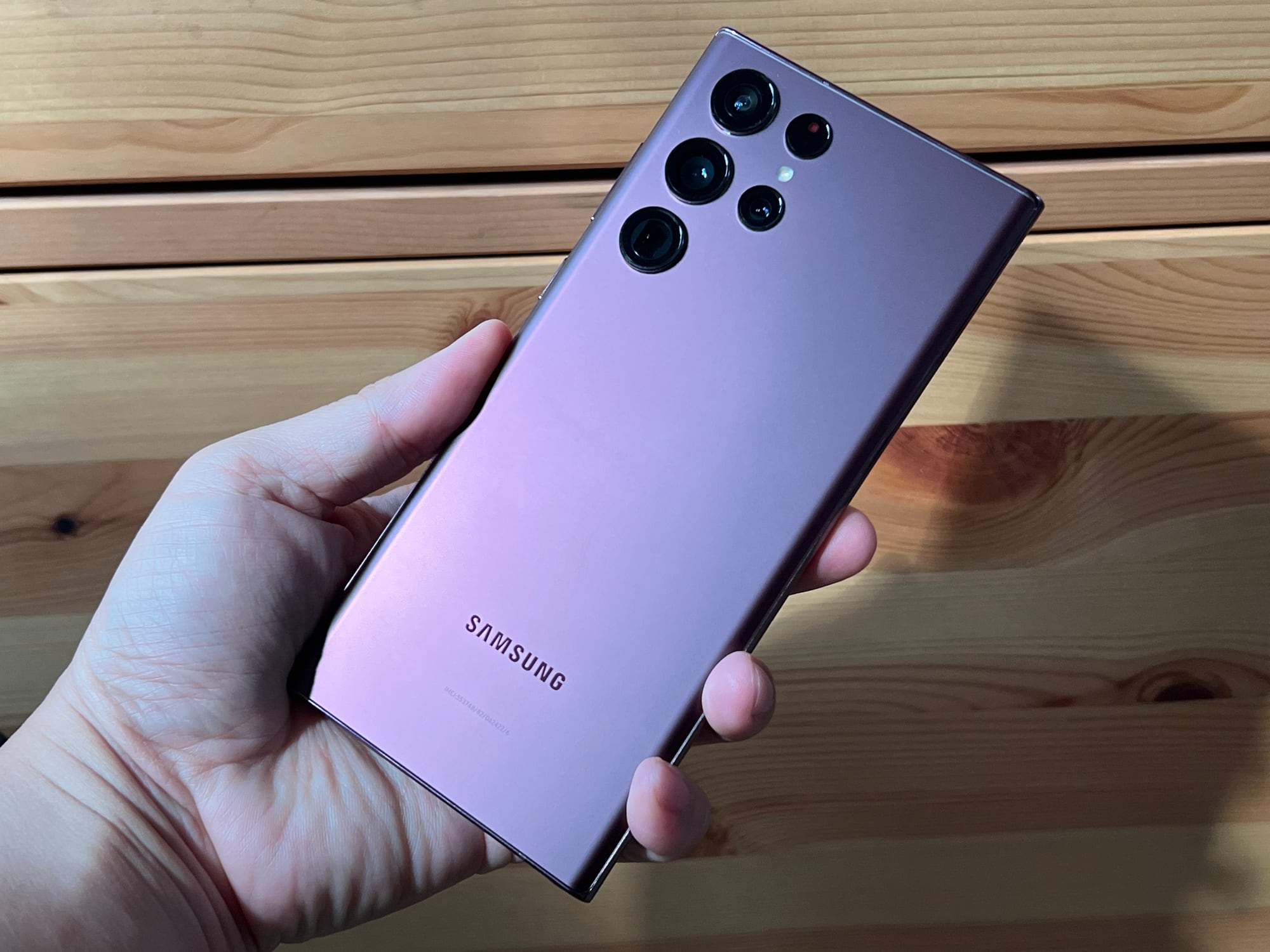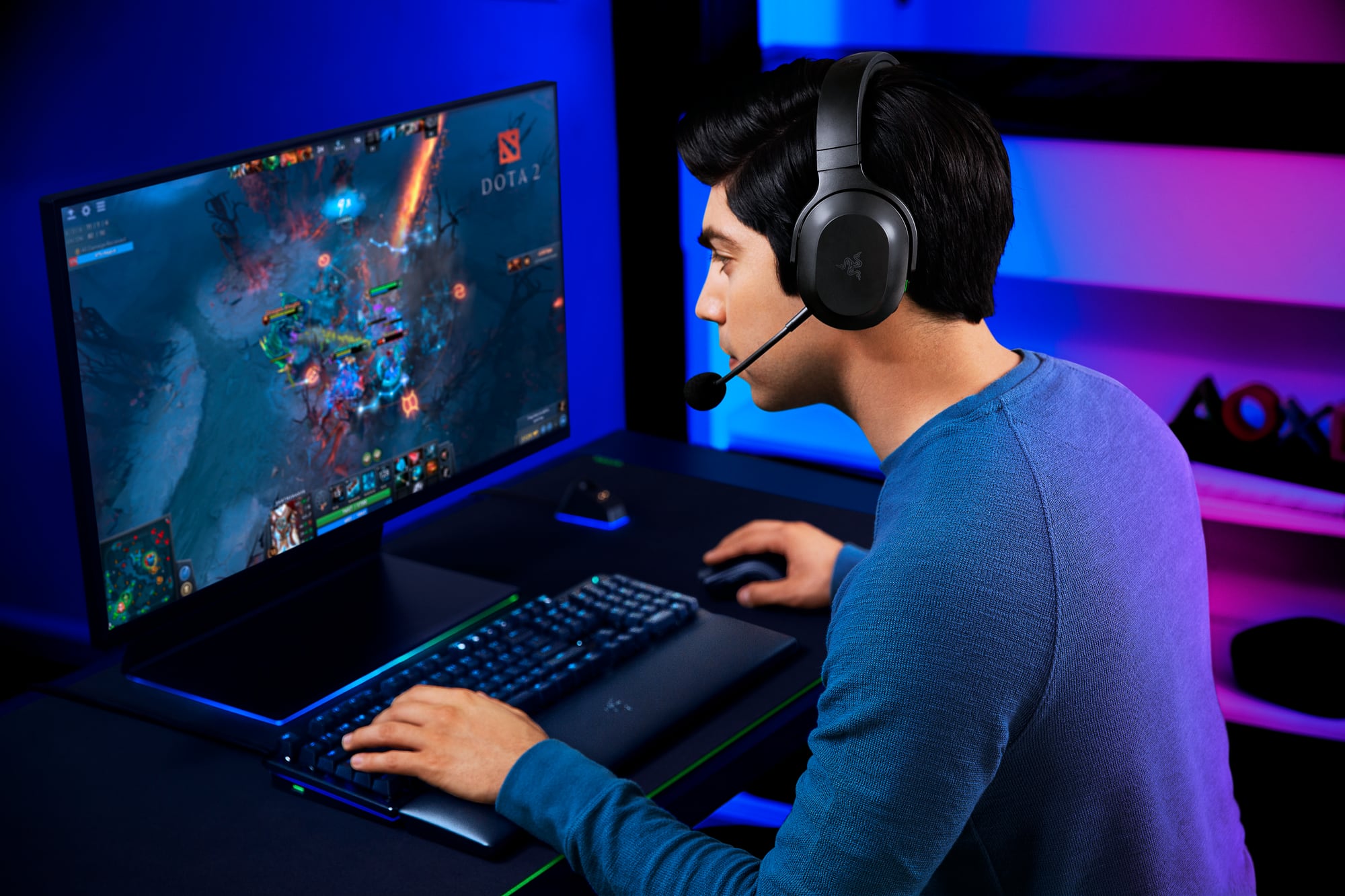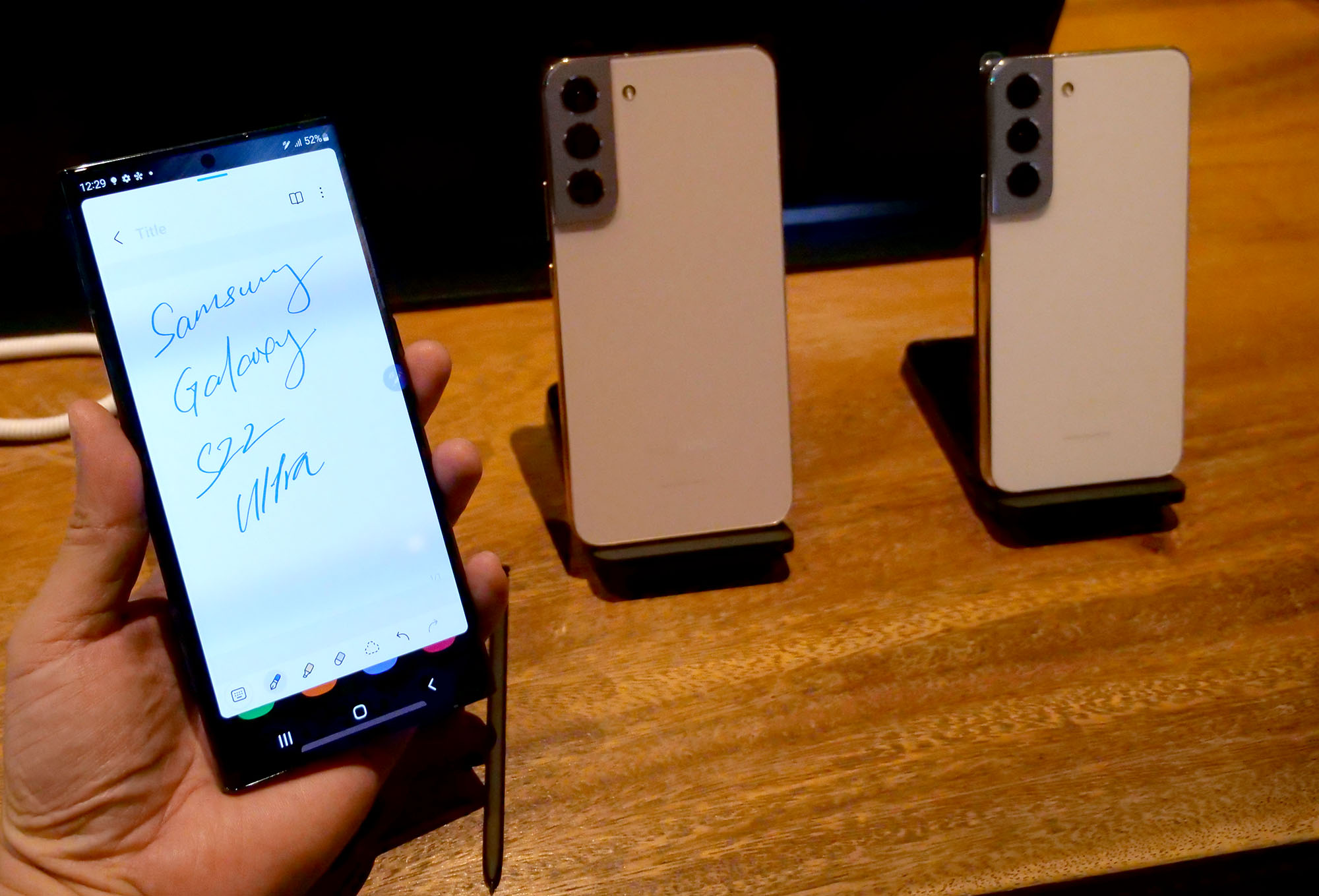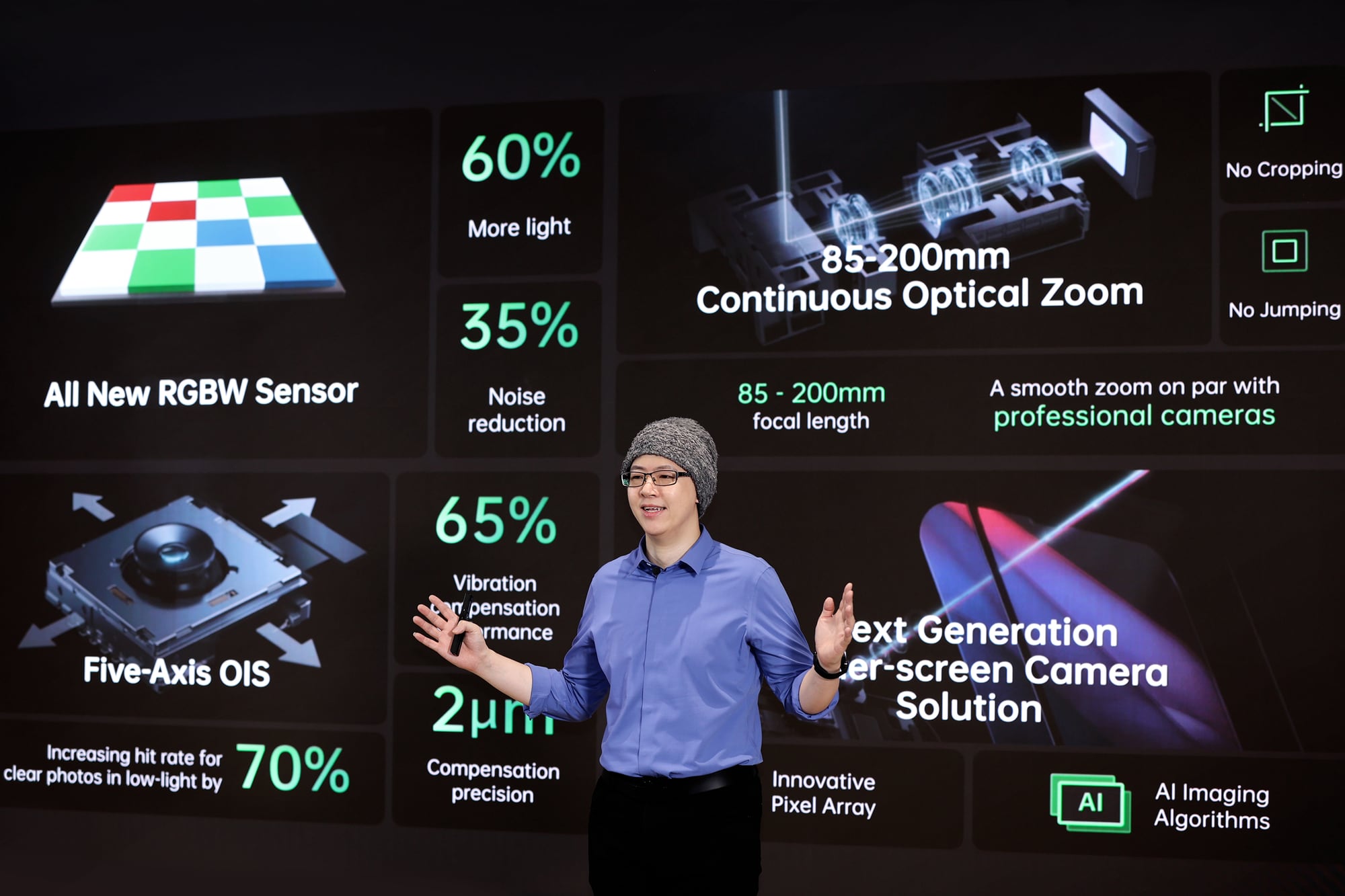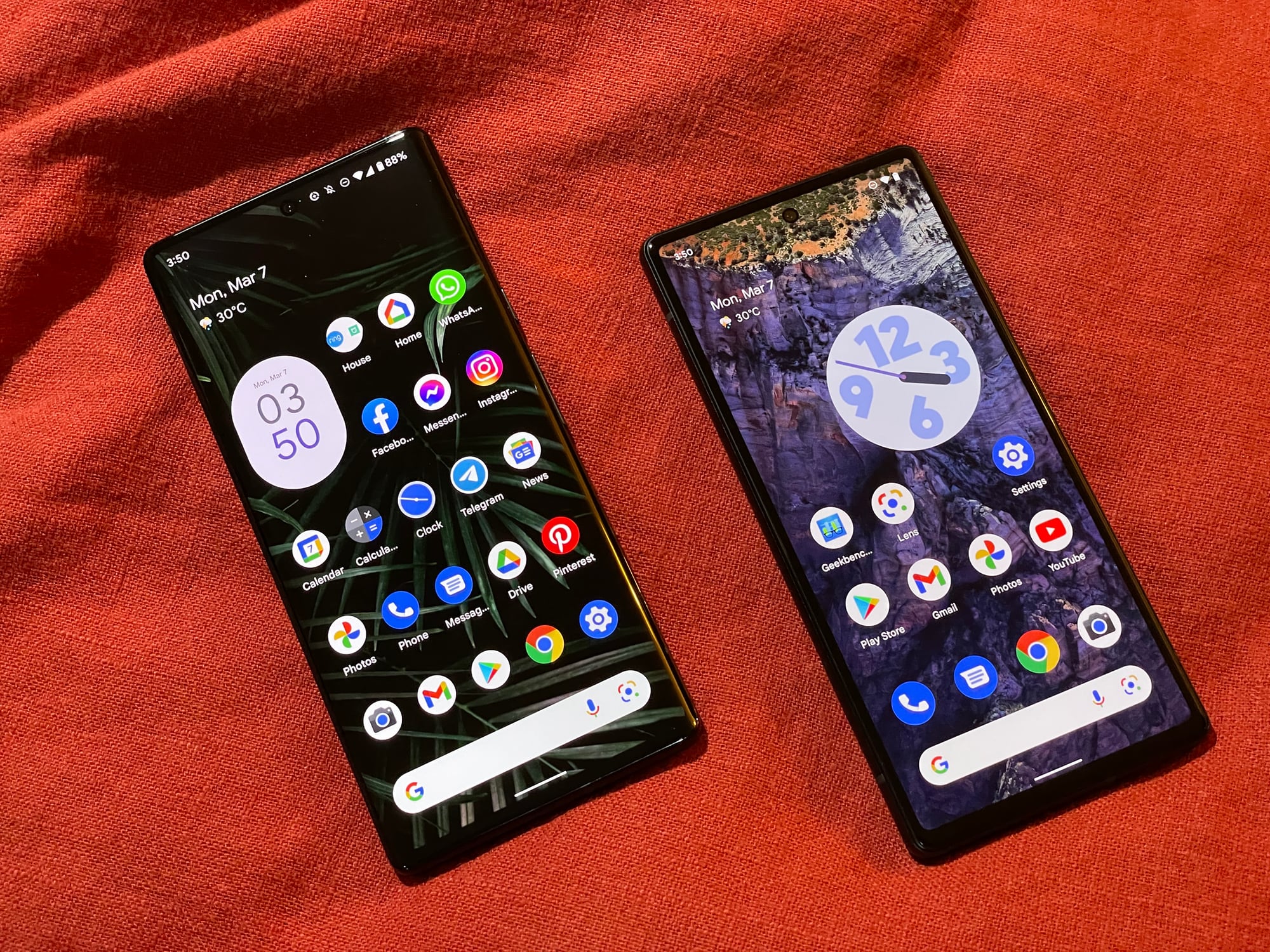
It has been quite a wait, but Google’s latest smartphones Pixel 6 and Pixel 6 Pro are finally officially here last month. The smartphones were first previewed by Google in Aug last year and launched two months later in selected countries.

Both smartphones run on the latest Android 12 mobile operating system and are powered by Google’s own Tensor processor. It is a mobile system on a chip designed specifically around Google’s industry-leading artificial intelligence technology, according to the US tech giant.
In addition, both are blessed with the next-generation Titan M2 security chip, which works with Tensor security core to protect your sensitive user data, such as user PINs and passwords.
| Pixel 6 | Pixel 6 Pro | |
| Price | S$999, available in Google Store | S$1,299, available in Google Store |
| Processor | Google Tensor with Titan M2 | Google Tensor with Titan M2 |
| Display | 6.4-inch AMOLED, 2,400 x 1,080 pixels; 90Hz refresh rate | 6.7-inch AMOLED, 3,120 x 1,440 pixels; 120Hz refresh rate |
| Operating system | Android 12 | Android 12 |
| Rear cameras | 12MP ultra-wide-angle, 50MP main wide-angle | 12MP ultra-wide-angle, 50MP main wide-angle, 48MP telephoto (4x optical zoom) |
| Front camera | 8MP | 11.1MP |
| Memory | 128GB; 8GB RAM | 128GB; 12GB RAM |
| Battery | Non-removable 4,614mAh | Non-removable 5,003mAh |
| Weight | 207g | 210g |
However, in Singapore, there are limited colour options and storage size. The Pixel 6 comes in two colours of Stormy Black and Sorta Seaform (actually, light green) with the Pixel 6 Pro also only having two colour options in Stormy Black and Cloud White. In other markets, both Pixel 6 smartphones come in three colours options.

Another downer is that both smartphones are only available in Singapore with the lowest storage size of 128GB. In the US and some markets, the Pixel 6 Pro is also available in 256GB and 512GB models while the Pixel 6 has another 256GB option. The Pixel 6 Pro has 12GB of RAM, while the Pixel 6 only has 8GB of RAM.
DESIGN
In terms of design, both Pixel 6 models look exactly the same apart from its size, weight and rear camera system (more on that later).

The Pixel 6 features a 6.4-inch FHD+ 90Hz flat display with a 8-megapixel (MP) hole-punch camera, while the Pixel 6 Pro sports a 6.7-inch QHD+ 120Hz curved display with a 11.1MP hole-punch front-facing camera.
Not only does the Pixel 6 Pro has a larger and higher resolution display, it also comes with LTPO technology. This means it can lower its refresh rate down to 10Hz (for content like text) from 120Hz dynamically to save battery life. On the other hand, the Pixel 6 can only switch between the standard 60Hz and 90Hz refresh rate.
As a result, the Pixel 6 Pro’s display feels much smoother and looks better. Not to mention, a bigger display is always a boon for a middle-age man like myself.

Regardless, I find the in-display fingerprint sensor on both models to be a tad slow. Not terribly slow, but slower than the likes of Samsung and Huawei flagships.
Both Pixel 6 models feature IP68 water resistance. In other words, they are water resistant down to 6m for up to 30 minutes as well as resisting those accidental coffee spills. But you will not want to drop these Pixel phones as they have an all-glass construction.
At the rear of the Pixel 6 smartphones, you will find the protruding camera bar along with a glossy glass surface. In other words, you cannot put the smartphone flat down on its rear. While this glossy glass surface might look nice, it is a tad slippery. And it is also a big fingerprint and smudge magnet when holding the phone.
CAMERA
As implied by its name, the Pixel series has always been known for its great photography functions. And the Pixel 6 models are set to continue this tradition.
Both smartphones feature the black camera bar at its rear with the Pixel 6 featuring a rear dual-camera system of 50MP wide-angle camera and a 12MP ultra-wide camera. On the other hand, the Pixel 6 Pro has a rear triple-camera system with an additional 48MP telephoto camera offering 4x optical zoom.

Clearly, the Pixel 6 Pro has the distinct advantage of having that extra telephoto camera. But the Pixel 6 does have a 2x digital zoom option in its native camera app, which the Pro also has.
In addition, the selfie camera in Pixel 6 Pro can take 4K videos, while the selfie camera in Pixel 6 can only take 1080p videos. Again, good to have but nothing essential. Otherwise, both smartphones shoot great videos showing great dynamic range, nice image stabilization and lots of details.
Similarly, the stills quality is excellent for the ultra-wide-angle and wide-angle cameras in both smartphones. There are plenty of sharp details everywhere with vivid colours and glorious blue skies.

However, I will avoid the 2x digital zoom on both Pixel 6 models. The photos taken are a bit soft to my liking. In fact, you get much better and sharper photos using the 4x optical zoom in Pixel 6 Pro than this 2x digital zoom option.

In addition, Night Sight – Google’s night mode – continues to impress in the new Pixels. You can get accurately exposed night landscapes with nice details . While the night shots at 4x optical zoom might be a little mushy and pixelated, they are still good enough for your Instagram posts.


As such, I think the Pixel 6 Pro’s 48MP telephoto camera is already well worth that extra S$300.

Not to forget, there are also some camera tricks like Magic Eraser that you can use to remove unwanted people in your shots. It does not work all the time. But if there is one or two photo bombs you want to remove, it should work most of the time.



You can also try the camera app’s Motion options whereby you can choose Action Pan and Long Exposure. The features are self explanatory by its name. Instead of training to do pan shots, you can easily achieve the same effect using Action Pan here.

Furthermore, you do not need tripods for this long exposure mode. You can just tap on the button and you can see the result instantaneously.

PERFORMANCE
I have been using the Pixel 3a XL for a while, and it has become excruciatingly slow when upgraded to Android 12. So, I was very excited to see if there will be a significant bump in performance with the new Pixel smartphones.
GOOGLE PIXEL 6
FOR
+ Cheapest among the flagship smartphones
+ Native Android 12 devoid of bloatware
+ Great overall performance
+ Excellent camera performance
+ Better battery life than Pixel 6 Pro
AGAINST
– Limited colour and storage options
– Slippery glass rear is fingerprint magnet
– No telephoto camera
RATINGS
FEATURES: 8.5/10
DESIGN: 9/10
PERFORMANCE: 9/10
BATTERY LIFE: 9/10
VALUE FOR MONEY: 8/10
OVERALL: 8.5/10
In terms of performance, both Pixel 6 models are neck to neck. In the GeekBench 5 benchmarking test, the Pixel 6 scored 1,056 (single-core) and 2,921 (multi-core) while the Pixel 6 Pro had a score of 1,054 (single-core) and 2,895 (multi-core).
By comparison, its major competitors like the Apple iPhone 13 Pro Max scored 1,737 (single-core) and 4,757 (multi-core) points, while the Samsung Galaxy S22 Ultra scored 1,197 (single-core) and 3,183 (multi-core).
However, all the apps and games run smoothly in both Pixel 6 smartphones. Compared to my Pixel 3a XL, the performance bump is painfully obvious with even swiping the display being much more responsive with the Pixel 6 models.
GOOGLE PIXEL 6 PRO
FOR
+ Affordable compared to other flagship smartphones
+ Native Android 12 devoid of bloatware
+ Gorgeous display
+ Great overall performance
+ Excellent camera performance
+ Telephoto (4x optical zoom) camera offers much convenience
AGAINST
– Limited colour and storage options
– Battery life is not as good as Pixel 6
– Slippery glass rear is fingerprint magnet
RATINGS
FEATURES: 9/10
DESIGN: 9/10
PERFORMANCE: 9/10
BATTERY LIFE: 8.5/10
VALUE FOR MONEY: 8.5/10
OVERALL: 9/10 [SGEEK Editor’s Choice]
However, the best part about Pixel 6 smartphones is the lack of bloatware. There are no “extra” app store, user interface (UI) skins or apps you do not want, unlike those found in smartphones from other makers.
Not to mention, you get the native Android 12 experience that has a clean and minimalist UI. You can try out the dynamic colours and themed icons that only the Pixel smartphones are able to do so.
BATTERY LIFE
In our usual video-loop battery test, the Pixel 6 Pro clocked 13 hours 15 minutes with Smooth Display turned on.
Surprisingly, the Pixel 6 lasted 1 hour 45 minutes longer than the Pro version. This is despite having a smaller capacity battery. I can only surmise that the Pixel 6 Pro’s larger display probably drains the battery faster.

Comparatively, the S22 Ultra clocked 14 hours and 16 minutes while the iPhone 13 Pro Max lasted 14 hours and 22 minutes in the same battery test.
Of course, mileage will vary depending on your usage. But both Pixel 6 smartphones should easily last you the entire day with around 30 to 40 per cent battery power left by the time you go to bed.
VERDICT
If you want the native Android experience, there is no doubt you should be getting either one of the Pixel 6 models.
My personal recommendation is to get the Pixel 6 Pro. It might have a shorter battery life, but I think its larger better display and telephoto camera give it the edge.



